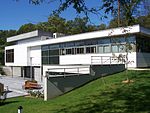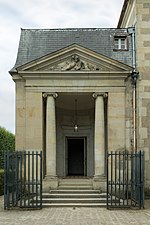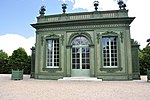Arboretum de Chèvreloup
Arboreta in FranceGardens in Yvelines

The Arboretum de Versailles-Chèvreloup (200 hectares) is a major arboretum located just north of the Palace of Versailles at 30, route de Versailles, Rocquencourt, Yvelines, Île-de-France, France. It forms part of the Muséum national d'histoire naturelle, and is open everyday in the warmer months; an admission fee is charged.
Excerpt from the Wikipedia article Arboretum de Chèvreloup (License: CC BY-SA 3.0, Authors, Images).Arboretum de Chèvreloup
Route de Versailles, Versailles
Geographical coordinates (GPS) Address Nearby Places Show on map
Geographical coordinates (GPS)
| Latitude | Longitude |
|---|---|
| N 48.830277777778 ° | E 2.1116666666667 ° |
Address
Route de Versailles
78150 Versailles, Rocquencourt (Rocquencourt)
Ile-de-France, France
Open on Google Maps











